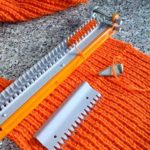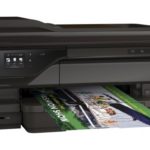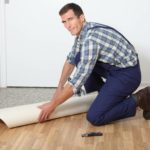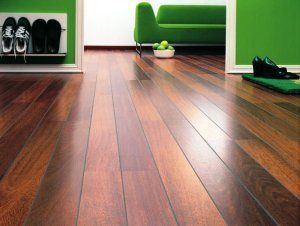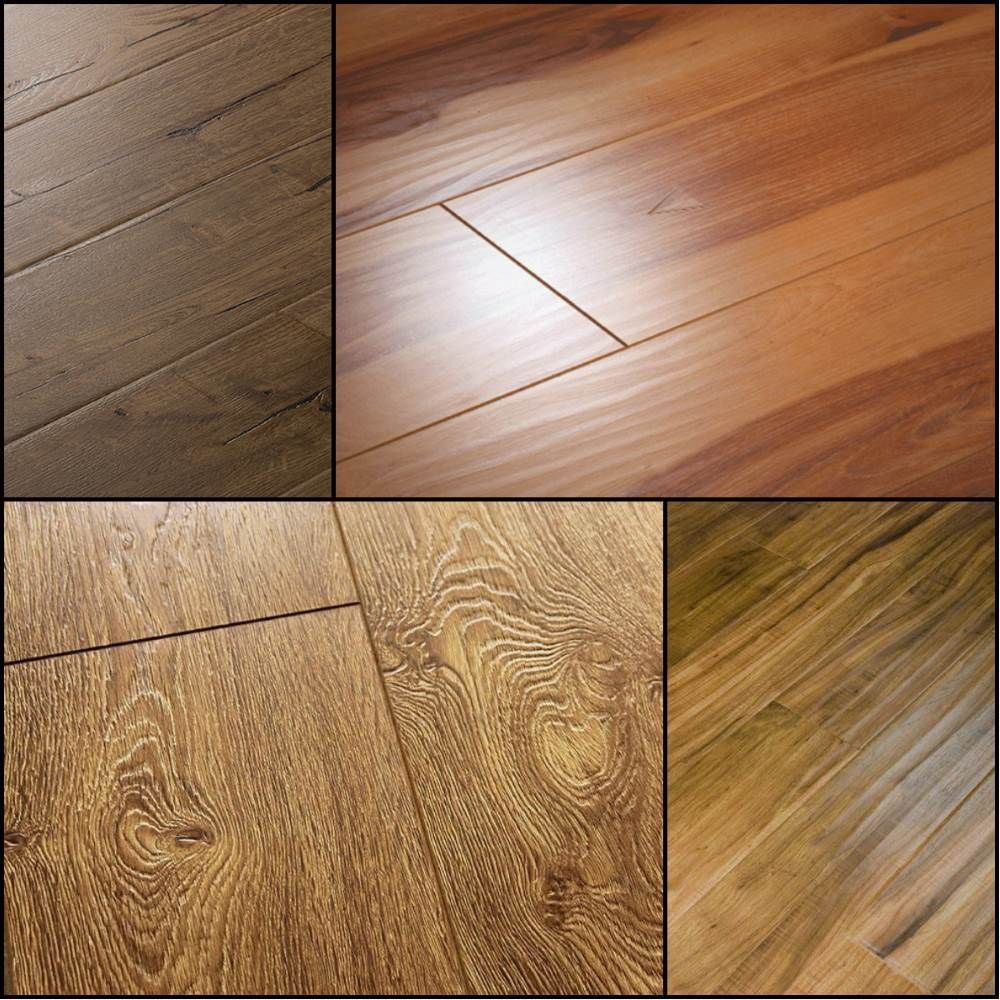Which underlay for laminate is better?
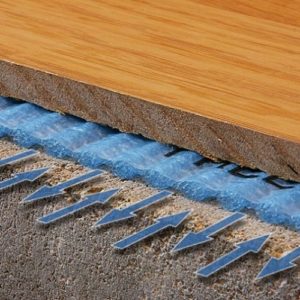 Today, laminate is often chosen as a floor covering - the material is beautiful, wear-resistant, moisture-resistant and durable. Laminate installation technology involves the use of a special substrate. There are different types of such linings on the construction market, and choosing the best option for the average person is difficult. What kind of substrates there are and what to consider when purchasing, this will be discussed in this publication.
Today, laminate is often chosen as a floor covering - the material is beautiful, wear-resistant, moisture-resistant and durable. Laminate installation technology involves the use of a special substrate. There are different types of such linings on the construction market, and choosing the best option for the average person is difficult. What kind of substrates there are and what to consider when purchasing, this will be discussed in this publication.
The content of the article
Why do you need a backing for laminate flooring?
The substrate under the laminate prevents the creaking of the lamellas, serves as additional heat and sound insulation, and extends the service life of the coating. This is a kind of damper that dampens vibrations from loads and acts as a shock absorber. A vapor-permeable gasket between the subfloor and the finishing coating levels out minor unevenness in the base and acts as a desiccant.
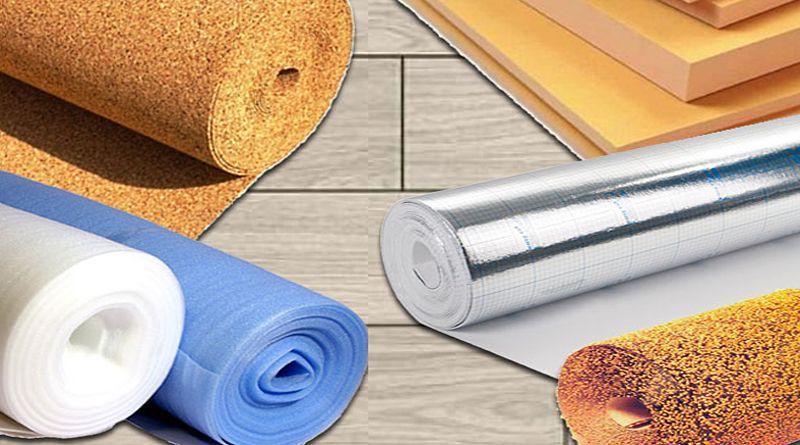
Which underlay for laminate is better?
Laminate underlay, including vinyl, is available in rolls or sheets. There are natural, synthetic and combined options with different technical and performance characteristics.
Popular types:
- cork;
- coniferous;
- polyethylene foam;
- polypropylene;
- EPPS – extruded polystyrene foam;
- combined - a symbiosis of several materials.
Let's look at each type separately.
Cork backing
The main advantage of such a substrate is environmental friendliness. Non-toxic balsa wood pad can be safely used for flooring in a child's room. Cork is quite durable and has good sound and heat insulation characteristics. The sheet material is resistant to deformation, but is afraid of moisture and is not used on foundations with large differences in height. The service life of the cork layer is twice as long as the service life of a cheap laminate, so it is not practical to buy an expensive underlay for an inexpensive coating.
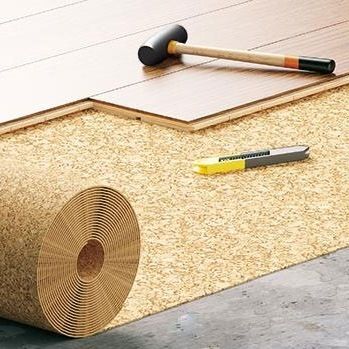
A type of cork underlay for laminate flooring on a wooden floor is a bitumen-cork analogue. This rolled underlay for laminate is made from kraft paper, which is impregnated with bitumen and sprinkled with fine balsa wood chips. Unlike cork, the bitumen-cork layer is moisture resistant.
Coniferous substrate
Coniferous backing is made from natural wood materials. Wood processing waste, in particular pine and spruce sawdust, is used as raw material. The porous structure provides good heat and sound insulation. Coniferous lining material eliminates minor unevenness of the subfloor, acts as a shock absorber, is vapor permeable and absorbs condensation, thus protecting the laminate from getting wet. A product with high technical characteristics is not cheap compared to synthetic roll analogues, but it more than justifies its price.
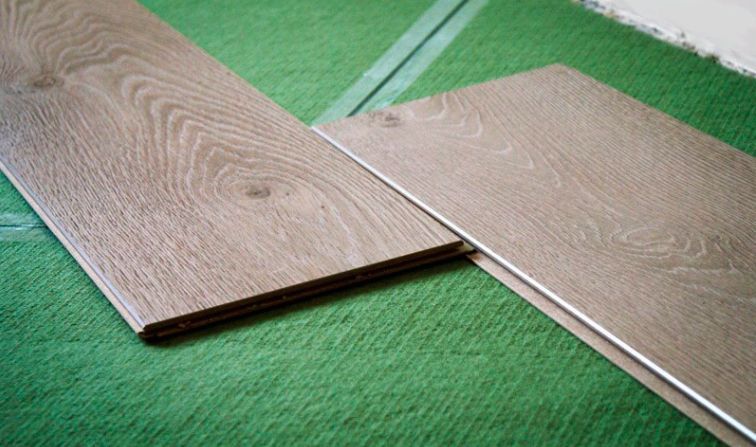
ATTENTION! When buying an expensive laminate, do not skimp on a high-quality and durable substrate. However, working with such material requires professional skills.
Made from polyethylene foam
The polyethylene foam backing is made by foaming the polymer. This type of heat and moisture insulation is the cheapest and, accordingly, the most popular for installation on concrete among the average consumer.
Advantages of the material:
- high insulating properties;
- resistance to any microorganisms, in particular mold and mildew;
- unattractive as food for rodents;
- ease of use - easy to cut with tailor's scissors.

IMPORTANT! A negative factor when choosing this material is instability to deformation. In just a couple of years, polyethylene foam flattens, as a result of which its shock-absorbing properties disappear.
Made from polypropylene
The polypropylene substrate, consisting of a huge number of air bubbles, deforms even faster than the previous analogue. In places with high traffic, the material becomes very thin, and height differences appear on the surface. Roll material, unlike sheet material, is more convenient to install, since when using it there is no need to fasten the pieces with tape. Waste is minimal, and the flexible film is cut with scissors. An undoubted advantage of a polypropylene substrate for an apartment is its moisture resistance.
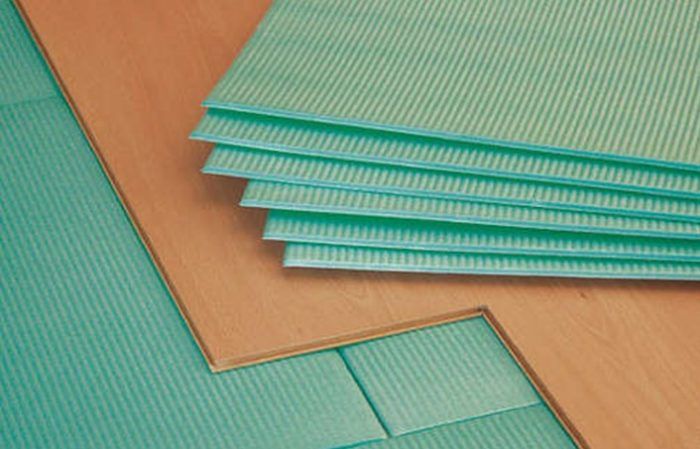
Rolled extruded polystyrene
Backing in rolls made of extruded (foamed) polystyrene is the best option for a layer between a concrete base and a laminated coating. The material has good shock absorption, high sound absorption, and eliminates minor errors in the subfloor.
The porous structure of polystyrene foam is capable of absorbing moisture, preventing condensation from settling on the lamellas.The use of this material allows you to avoid laying a waterproofing membrane.

Combined
Combined is a mixed version consisting of polystyrene foam and polyethylene. This is a rolled material of 3 layers - polystyrene foam balls, enclosed between 2 multi-functional layers of polyethylene film. The top layer of polyethylene prevents moisture from entering the material, and the bottom layer is vapor permeable and allows condensation to escape through expansion gaps.
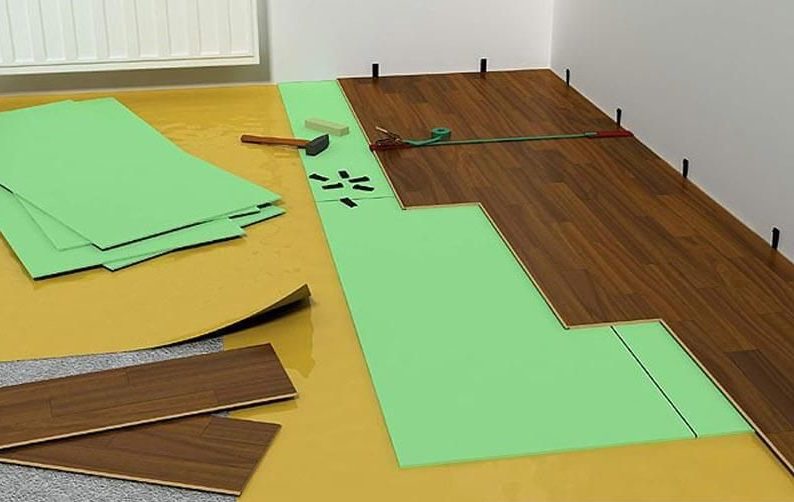
IMPORTANT! It looks simple, but in reality, the high-tech material protects the laminate from getting wet and extends the life of the floor covering.
Advantages of a combined gasket:
- flexibility - able to take any shape of the base;
- durability - does not rot, does not crack;
- resistance to pathogenic microflora - not afraid of mold and fungi;
- acts as a leveler for base errors.
How to choose a substrate for a heated floor
When installing a heated floor, special attention is paid to the substrate. The material must have good thermal conductivity, so the “anything goes” option is not suitable here. The perforated membrane has high thermal conductivity characteristics, which, along with other functions (shock absorption, sound insulation, moisture protection), allows heat to pass through unhindered.
OSB boards can be used as a cushioning layer when installing heated floors. — sheets measuring 250x120 cm. The average price of a slab 0.9 cm thick is 500 rubles. Other common options are non-foil polyethylene or corrugated cardboard.

